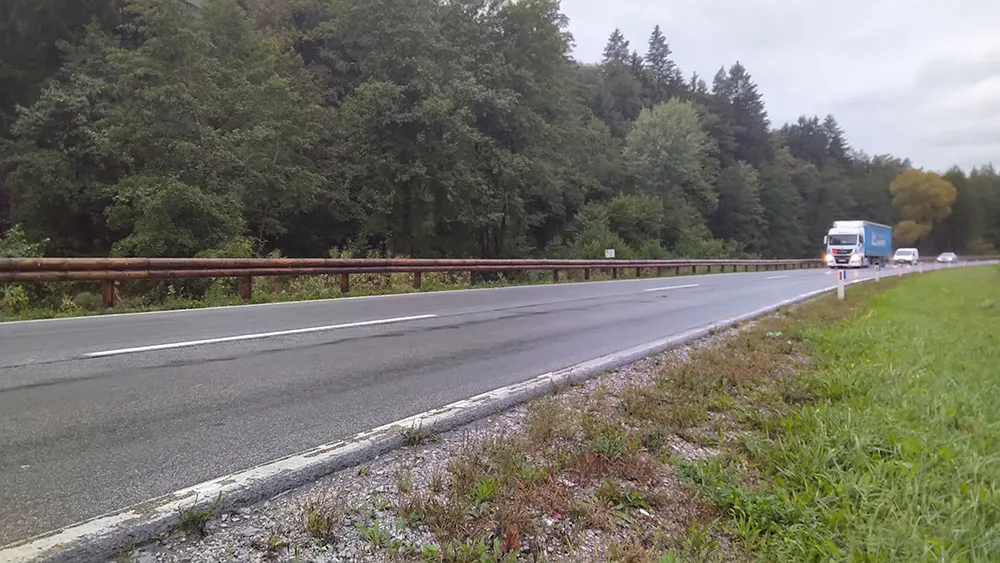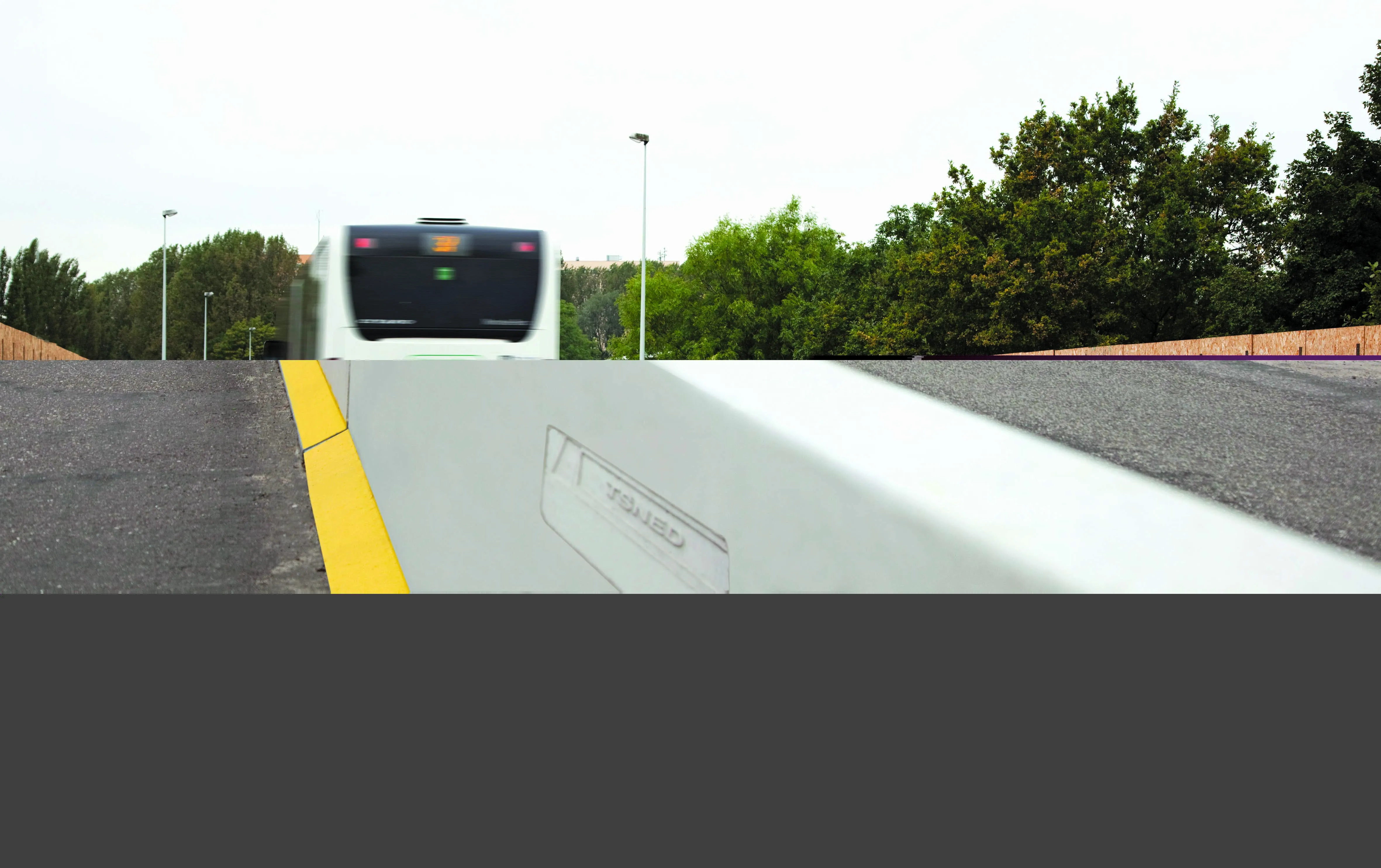
The T32 steel-backed timber guardrails are separating and protecting users of a recently created bicycle path along a main road into the city of Velenje. The north-eastern city is nestled among the green hills of the Šalek Valley, with the Kamnik–Savinja Alps to the west and the Pohorje Mountains to the east.
On a very different route, a T32 VRS (vehicle restraint system) runs along a scenic and sinuous mountain road into Velika Planina, an area of stark beauty. The area is a dispersed high-elevation settlement of mostly herders' dwellings on the karst Big Pasture Plateau in the Kamnik Alps region of Slovenia.
Tertu says that the T32 guardrails – crash-tested and certified CE for N2-W2 and N2-W3 performance – offer low visual distortion in front of obstacles or along an elevation gain. For areas of natural beauty, their natural looking appearance makes the T32 a perfect fit.
The system consists of C125 steel posts with post spacing of 1.33m and the B-profile steel rail (296x4300x2.5mm) is cladded with four half-round logs of 16cm. The rest is around 750mm high and for safety the wood is pressure-treated with chromium and arsenic-free preservatives. Meanwhle, in the UK Tertu reports that more of its steel-backed timber guardrails are now VRS certified.
HORIBA MIRA Certification has approved, in compliance with the UKCA standards, the T22 4MS2 N2AW4 (2m post spacing) and TM18 4M N2AW5 (4m post spacing) models. These join the already certified T32 crash barrier offering both N2W2 and N2W3 performance. All these steel backed timber VRS are fully certified for use in the UK, making more of Tertu’s systems available for UK roads.









